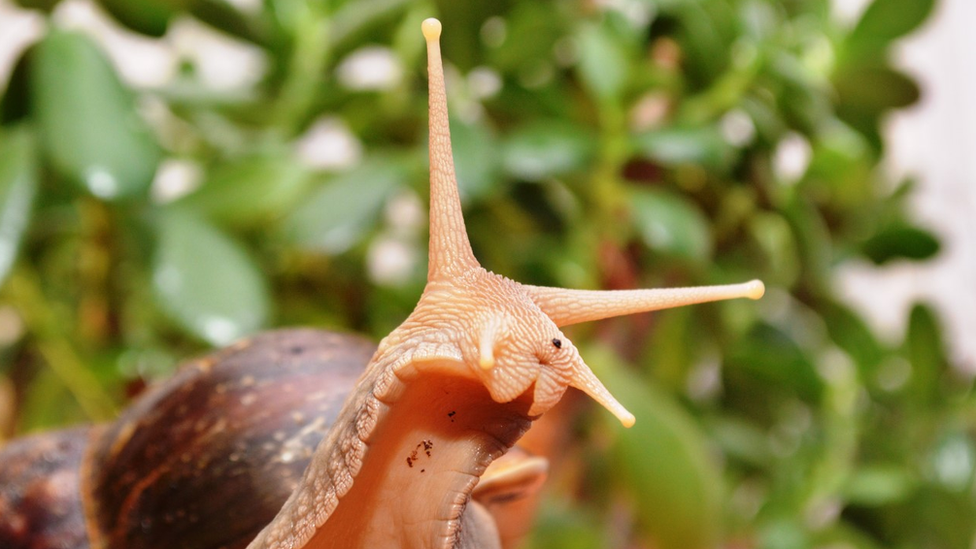'Extinct' partula snails released back into the wild
- Published
- comments
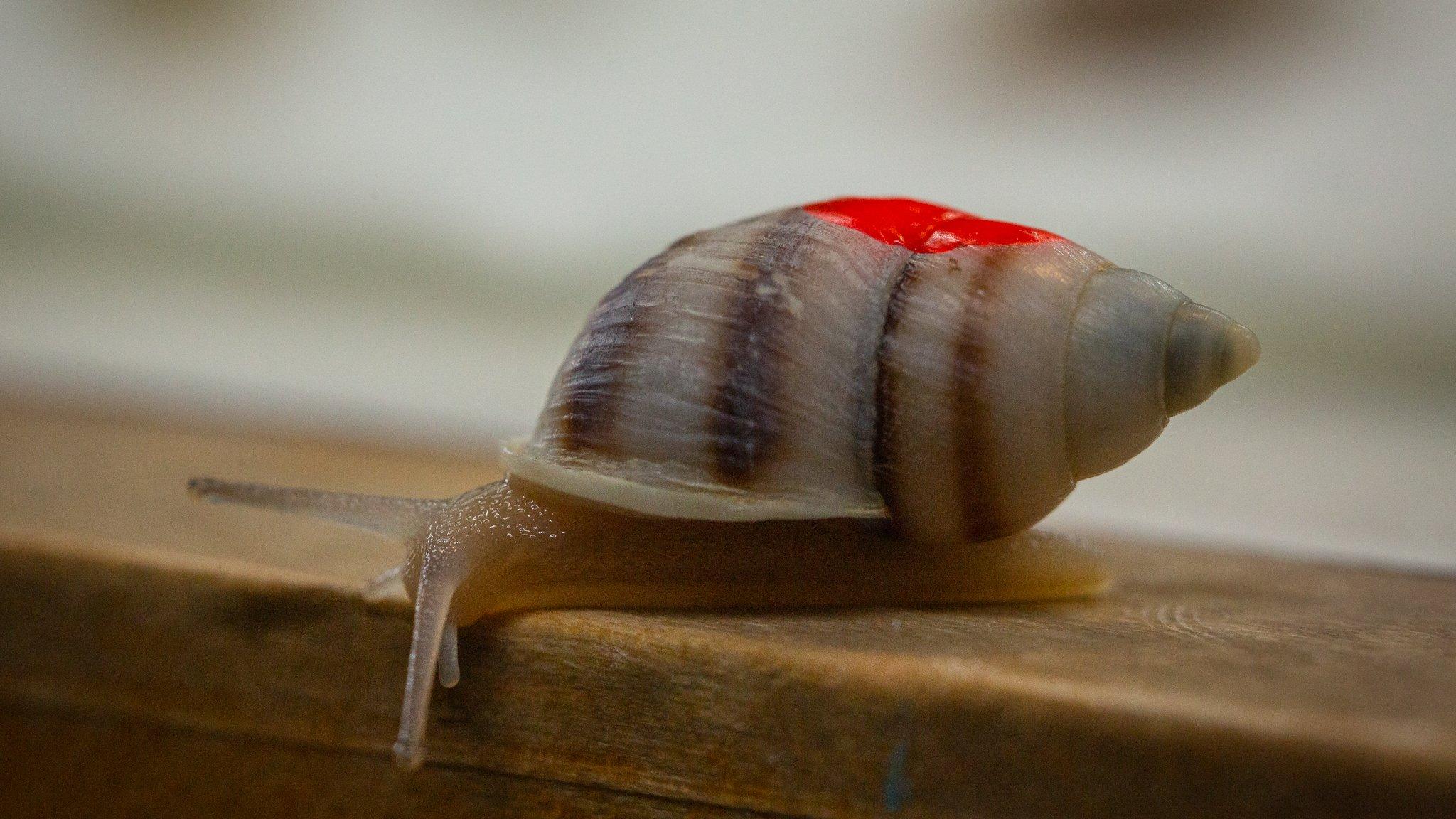
Partula snails measure between 1-2cm in length
More than 5,000 partula snails, including some that are extinct in the wild, have been returned to their homes as part of a conservation programme.
The snails were flown more than 9320 miles (15,000km) to their French Polynesian island home in what is thought to be the largest reintroduction in history.
This comes almost 30 years after some of the species were almost wiped out by an invasive species that was introduced by humans.
Paul Pearce-Kelly who co-ordinates the programme says it highlights the conservation power of zoos and the "little snails represent hope for the world's wildlife".
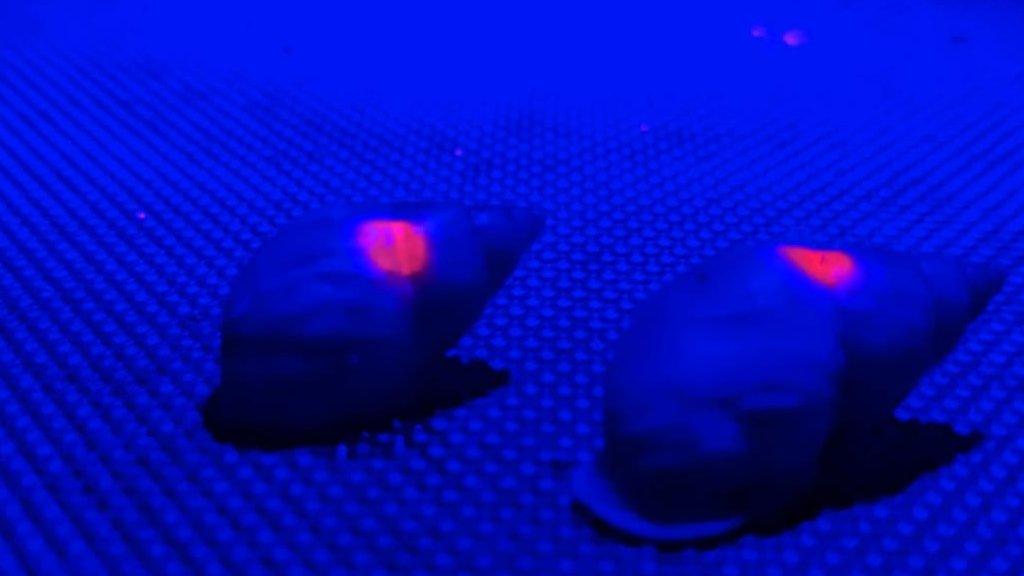
The snails were marked with UV paint to help conservationists monitor them
The snails were reared at conservation zoos in London, Whipsnade, the Royal Zoological Society of Scotland and St Louis Zoo before being flown to the islands of Moorea and Tahiti.
Eight species and sub-species were reintroduced that were rather extinct in the wild, critically endangered or vulnerable.
Before making the two day trip the snails were marked with a dot of red UV paint so they glow under special light.
This was to help conservationists monitor them at night when they are most active.

The species was almost wiped out 30 years ago
Partula snails - which are also known as Polynesian tree snails - eat decaying plants and fungi, so they play an important role in keeping forests healthy.
They were under threat of extinction in the 1980s and early 1990s, after the invasive predatory rosy wolf snail was introduced to rid the islands of a previously introduced alien species, the African giant land snail.
However the predatory rosy wolf snail targeted the native snails instead which meant many species were lost or left close to extinction.
The last few surviving individuals of several partula species were rescued in the early 1990s by London and Edinburgh Zoos, in order to begin the international conservation breeding programme.
With help from universities around the world that programme has now seen more than 21,000 snails reintroduced to the islands.
- Published7 March 2022
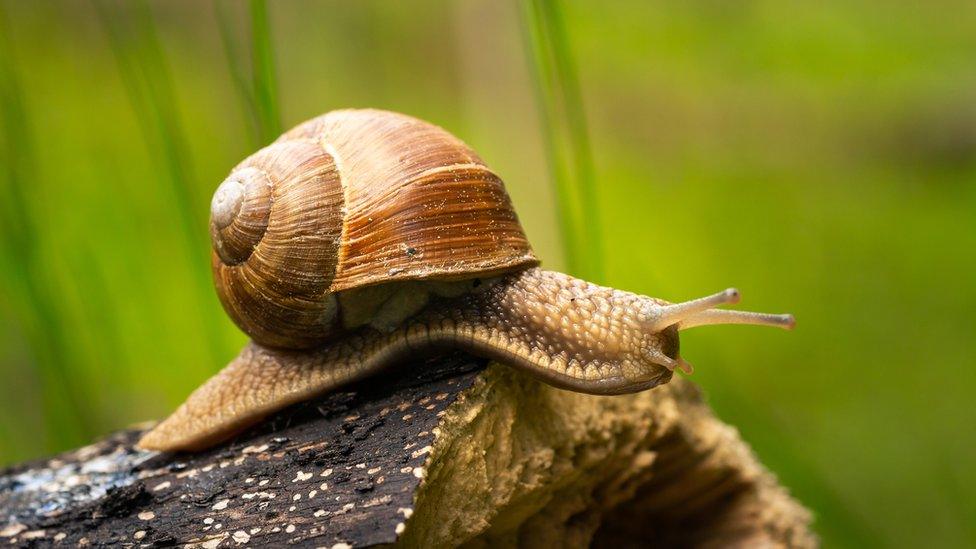
- Published10 November 2022
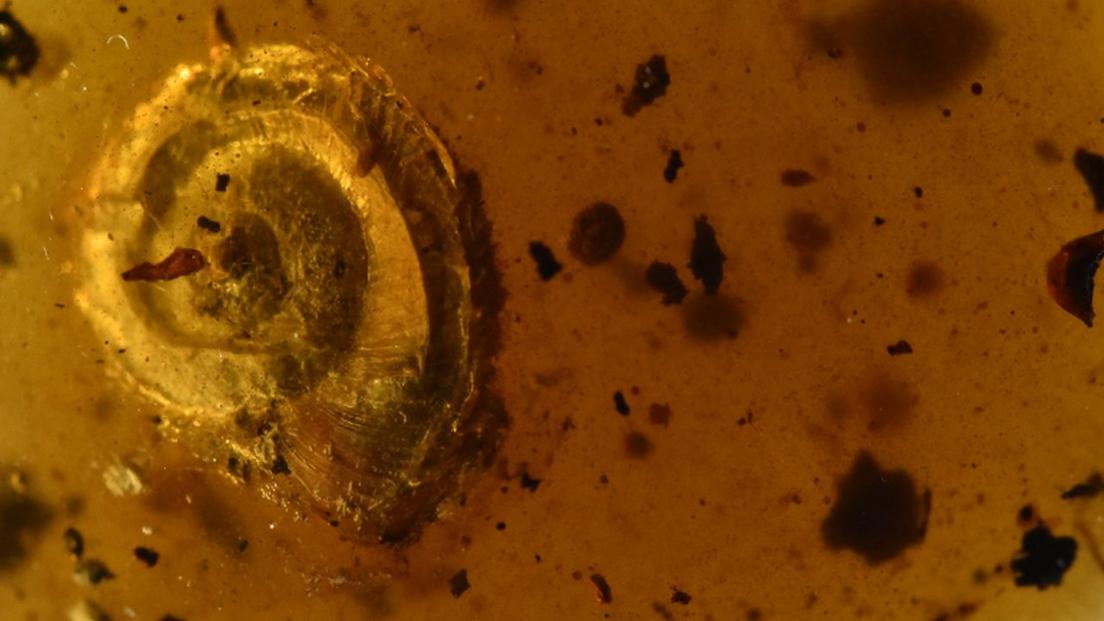
- Published21 July 2022
